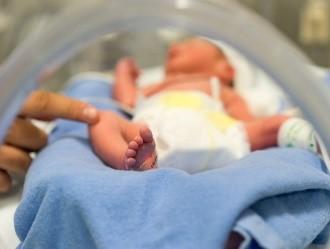Alarm-Limiting AlgoRithm-based Monitoring
Alarm aims to fuse, process and analyze the unobtrusive vitals and video monitoring of babies to reduce false alarms, monitor motion and detect deterioration.
Duration
June 2017 - October 2022Partners
Project Manager
Preterm infants in a neonatal intensive care unit (NICU) require continuous monitoring as their life is at serious risk. In current patient monitoring based on vital signs, however, multiple alarms are generated for the same critical event, causing alarm fatigue of caregivers and stress in patient and parents. Moreover, detection of clinical deterioration with vitals crossing predefined boundaries can only be done in hindsight, whereas an early warning of such deterioration would be much more valuable. Finally, current monitoring involves a variety of obtrusive sensors and wiring, interfering with the babies’ well-being. This projects aims to bring patient monitoring beyond current state of the art by fusing the vitals and use video monitoring to reduce false alarms; employing data analytics to detect deterioration earlier; and using video techniques for robust motion detection and unobtrusive monitoring.
Project Related Publications
-
Ilde Lorato,Sander Stuijk,Mohammed Meftah,Deedee Kommers,Peter Andriessen,Carola van Pul,Gerard de Haan
Automatic Separation of Respiratory Flow from Motion in Thermal Videos for Infant Apnea Detection
Sensors (2021) -
Ilde Lorato,Sander Stuijk,Mohammed Meftah,Deedee Kommers,Peter Andriessen,Carola van Pul,Gerard de Haan
Towards Continuous Camera-Based Respiration Monitoring in Infants
Sensors (2021) -
Ilde Lorato,Sander Stuijk,Mohammed Meftah,Deedee Kommers,Peter Andriessen,Carola van Pul,Gerard de Haan
Multi-Camera Infrared Thermography for Infant Respiration Monitoring
Biomedical Optics Express (2020) -
Ilde Lorato,Sander Stuijk,Mohammed Meftah,Wim Verkruijsse,Gerard De Haan
Camera-based on-line short cessation of breathing detection
ICCV 2019 Workshops (2019) -
Ilde Lorato,Tom Bakkes,Sander Stuijk,Mohammed Meftah,Gerard de Haan
Unobtrusive respiratory flow monitoring using a thermopile array
Applied Sciences (2019)

Preterm infants in a neonatal intensive care unit (NICU) require continuous monitoring as their life is at serious risk. In current patient monitoring based on vital signs, however, multiple alarms are generated for the same critical event, causing alarm fatigue of caregivers and stress in patient and parents. Moreover, detection of clinical deterioration with vitals crossing predefined boundaries can only be done in hindsight, whereas an early warning of such deterioration would be much more valuable. Finally, current monitoring involves a variety of obtrusive sensors and wiring, interfering with the babies’ well-being. This projects aims to bring patient monitoring beyond current state of the art by fusing the vitals and use video monitoring to reduce false alarms; employing data analytics to detect deterioration earlier; and using video techniques for robust motion detection and unobtrusive monitoring.
Our Partners
-
EAISI
Read more -
Center for Care & Cure Technology Eindhoven
Read more -
Eindhoven MedTech Innovation Center
Read more -
Cyber-Physical Systems Center Eindhoven
Read more
Researchers involved in this project
Researchers
Contact Us
Teamlead: associate professor Carola van Pul, c.v.pul@tue.nl